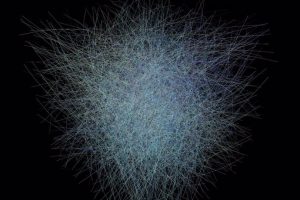The results of a study on the genetic processes used by a freshwater worm to regenerate lost parts of its body have been presented; the same ones it uses to reproduce without the need for eggs and sperm. The results highlight the prominent role of stem cells in this process, opening new avenues of study around them.
The study has been led by researchers from the Autonomous University of Madrid (UAM) and the National Museum of Natural Sciences (MNCN), both entities in Spain.
The authors of the study have characterized the genetic patterns that regulate the processes of regeneration and asexual reproduction in Pristina leidyi, an annelid (segmented worm) that inhabits rivers and freshwater lakes around the world. This annelid is used as a model animal in research and could help understand how regeneration and asexual reproduction work in other groups of animals.
Regeneration is the ability of some animals to replace lost body parts, generally due to damage or accidents, such as lizards, which recover their tail after misleading a predator. It is a process that is similar to asexual reproduction, that is, the production of new individuals identical to the parent —clones— without the need to fertilize gametes (eggs and sperm). This type of reproduction occurs in numerous animals, such as sponges, jellyfish or starfish, which are capable of generating entire individuals from a single arm. Unlike regeneration, asexual reproduction does not start as a result of damage or injury, but is activated when certain environmental conditions occur.
Head of the freshwater segmented worm Pristina leidyi. The worm can be seen with its mouth open just below a proboscis-like extension that functions as a sensory apparatus. You can also see the “legs” or silks above and below the body, which help in movement. Image taken by scanning electron microscopy. (Photo: Irene del Olmo et al.)
To study the genetic basis of these processes, the research team used transcriptomic analysis, which analyzes the genes that are being expressed at a given time to identify the genes involved in each process. “In this case, we compared the genes that are expressed in animals that were regenerating, in individuals that were reproducing asexually, and in worms that were not regenerating and did not show signs of reproduction,” explains Irene del Olmo, a UAM researcher.
“The results indicate that the machinery that regulates regeneration is common in different animal groups, since many of the genes identified in this study are also present in other organisms. For example, the regeneration of fins and legs of fish and amphibians, and even the regeneration of the liver and other organs of some mammals, occurs in a similar way at the genetic level”, highlights Aida Verdes, a researcher at the MNCN.
The study also describes numerous pluripotency genes, which are characteristic of stem cells. These cells are totipotent, that is, they are capable of becoming any cell type in the body, from a red blood cell to a neuron. The research indicates that stem cells could play a fundamental role in controlling the regeneration and asexual reproduction of annelids, just as it happens in other animals such as jellyfish or salamanders.
“It is worth mentioning that many other genes also play an important role in both processes. It is known that the morphological changes during regeneration and asexual reproduction are very similar, and this, added to the fact that only animals capable of regeneration can reproduce asexually, suggests that the two processes are closely related at the evolutionary level”, Patricia points out. Álvarez-Campos, researcher at the UAM. “In fact, there are studies that point to the possibility that asexual reproduction has evolved from regeneration,” adds Álvarez-Campos.
Annelids are one of the most abundant animal groups, with a large number of both aquatic and terrestrial species distributed worldwide, including earthworms and leeches. Among all these species, Pristina leidyi is very interesting as a study model, since it is very easy to cultivate in the laboratory, constantly reproduces asexually and is capable of regenerating the entire body from a few segments. These characteristics make this worm an ideal animal for studying two of the most interesting processes from an evolutionary point of view: regeneration and reproduction.
“This research has not only made it possible to delve into the study of what happens at the genetic level during these processes, but it also opens up the possibility of creating new lines of research with stem cells,” concludes Del Olmo.
The study is titled “Distinct patterns of gene expression during regeneration and asexual reproduction in the annelid Pristina leidyi.” And it has been published in the academic journal Journal of Experimental Zoology Part B: Molecular and Developmental Evolution. (Source: UAM / MNCN)



![[Img #74675]](https://thelatestnews.world/wp-content/uploads/2024/12/They-discover-a-new-class-of-X-ray-sources-in-the-150x150.jpg)








![[Img #66539]](https://thelatestnews.world/wp-content/uploads/2022/07/The-genetics-that-allow-a-worm-to-regenerate-lost-parts.jpg)
![[Img #74675]](https://thelatestnews.world/wp-content/uploads/2024/12/They-discover-a-new-class-of-X-ray-sources-in-the-300x200.jpg)


Add Comment